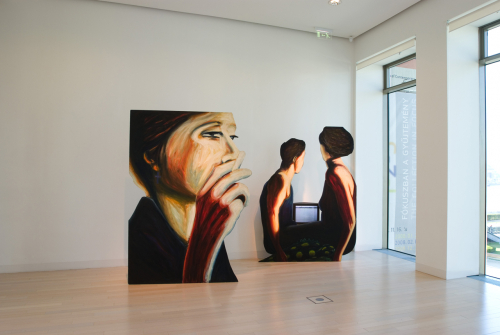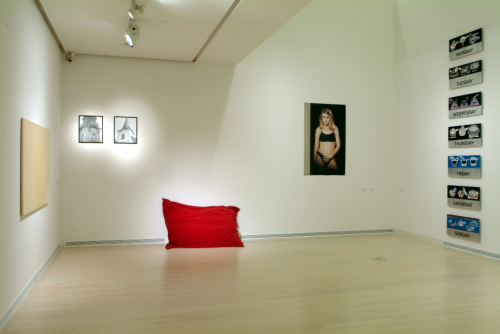The video Face to Face is based on a rather simple dramaturgy. The scene is the lavatory of an undefined public institution where female and “male” (or female disguised as male) characters appear, but cannot be seen together in the scenes. While the male is seen only during urination, the female character is more active, although her activities only represent her defenselessness and hopeless struggle, such as the scene in which the fruits (oranges, apples, strawberries) roll out from the basket, or when she tries to climb out to the lobby from behind the closed door of the toilet.
One of the most emphatic and repeated scenes in the video is when the fruits – apples, strawberries and oranges – fall to the ground. This scene may be interpreted as a visual metaphor in which the continuity and coherence of signs are disrupted, i.e. they fall apart, and in which any attempt to gather or restore them is vain, fruitless. Besides its general application, this metaphor may be extended to describe the visual representation of gender roles and categories.
The category of fragmentariness is often related to one of the basic psychological tropes of postmodernism, schizophrenia, although not from a diagnostic, but rather a descriptive and linguistic perspective. In Hajnal Németh’s work, this may be observed in the way she uses gender-related signs often reflecting on phenomena of hybrid identity, such as androgyny or cross-dressing.




